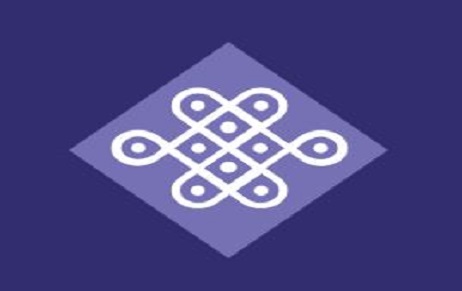Introduction What is Artificial Intelligence? Creating computer systems capable of carrying out activities that need…
Compulsory Licensing Application against the Patented Drug SAXAGLIPTIN by Lee Pharma
Lee Pharma, a Hyderabad based Indian pharma company, has filed a Compulsory Licensing (CL) Application (in accordance with Section 84(1) of the Indian Patents Act) against one of the patented drug Saxagliptin for treating Diabetes Mellitus. The Patent on Saxagliptin was granted to Bristol Myers Squibb (BMS) in India on 30th April 2007 having number IN 206543 having title “A Cyclopropyl-fused pyrrolidine-based compound” which was assigned to AstraZeneca by way of Deed of Assignment. This is the third instance in India where a compulsory license has been asked for. Earlier, Natco got its first CL against Bayer’s patented drug Sorafenib while the CL application from BDR against Bristol Myers Squibb (BMS)’s patented drug Dasatinib was rejected by IPO. The application for compulsory licensing against the Saxagliptin drug was filed by Lee Pharma dated 29.06.2015.
Grounds Relied on Lee Pharma for Compulsory Licensing:
- That the reasonable requirements of the public with respect to the patented invention have not been satisfied” (Section 84 (1) (a))
The Applicant- Lee Pharma has stated in its CL Application that Saxagliptin is not manufactured in India even after 8 years of the grant of the Indian patent by BMS, rather is being imported to India by BMS or AstraZeneca and marketed by AstraZeneca. By citing form 27 filed by BMS with respect to working of patent India for the year 2013, Lee pharma stated in his application that the total number of tablets imported to India was 823,855 and the total value was Rs. 654,629/-. Based on the above, the cost for importing one tablet in India is only Rs 0.80 per tablet whereas the same is being sold at a market price of Rs. 41-45/- per tablet.
In an interesting fact, the applicant has further stated that Saxagliptin is one of the four main medicines which are used for the treatment of Type-II Diabetes Mellitus (DM). Further, the applicant has shown that the quantity of imported tablets is too less to meet the requirements of Indian patients suffering from Type-II DM. They state that there are around 60 million diabetes type II patients, and that ‘even if’ only 1 million out of the 60.1 million were to be prescribed Saxagliptin, 823,855 units (as per Form-27) fall far short of the required amount which is about 0.23% of the total number of tablets required for a year. So there is more than a 99% shortage of Saxagliptin in the Indian market.
- That the patented invention is not available to the public at a reasonably affordable price (Section 84 (1) (b))
As discussed above, the cost of importing one tablet of Onglyza in India is only about Rs 0.80/ per tablet whereas the same tablet is being sold in the Indian market by BMS and AstraZeneca at a market price of about Rs. 41-45/- per tablet. Citing income per capita of an Indian, the applicant showed that the cost of one tablet of patentee’s medicine is more than the whole day earning. Therefore, according to the Applicant, excessive-high price of medicines is a barrier to access to Saxagliptin for poor patients in India. Thereby the reasonable requirement of the public is not being met in terms of reasonably affordable prices.
- That the patented invention is not worked in the territory of India (Section 84 (1) (c))
The applicant further stated that even after passing a long period of eight years from the date of the grant, the patentee has not taken adequate steps to manufacture Saxagliptin in India and make full use of the invention. Pertinently, in the earlier Nexavar CL case, the same contention was raised and it was concluded by the Controller that the “worked in the territory of India” means “manufactured to a reasonable extent in India”.
- Efforts made by the applicant for Voluntary license (VL): (Section 84(6) (iv))
The applicant earlier requested the patentee to obtain a Voluntary License to manufacture and sell the drug in India by writing to them on 02.05.2014. In response to said request for a license, the patentee asked for certain clarifications about the Lee pharma and at the same time disagreed with the applicant’s submission that “the Saxagliptin tablets (ONGLYZA) are not available to the general public at a reasonably affordable price and thereby the reasonable requirements of the general public are not being met”. Further, the applicant received a reply from Patentee’s counsel asking for clarifications, manufacturing and marketing details, R&D status, and other relevant details for which according to the Applicant, they replied promptly. The applicant sent a reminder request to the council but did not receive any reply neither from the patentee nor from their counsel.
Another important factor, on which the applicant relied for considering a CL application, is the ability and capability of Lee Pharma to manufacture and cater to the needs of the entire public. Lee Pharma has stated in the Application that it can manufacture 10,00,000 tablets a day with a price of Rs. 27/- per tablet. Also, the applicant stated that they had already asked for a license from the State Government to manufacture Saxagliptin tablets.
Conclusion:
It would be interesting to see the fate of the CL application filed by Lee Pharma, in view of the fact that this CL application is the third instance prior to which one CL has been granted and one has been rejected. However, it is pertinent to note that the prior two CL applications were for anti-cancer drugs (life-threatening diseases) while the present application is for Diabetes Mellitus (life management disease). Hence the decision would be noteworthy irrespective of the outcome of the CL application which will have a great impact on the Industry regarding Compulsory Licensing practice/filing in India.
About the Author: Mr. Sitanshu Singh, Patent Associate at Khurana & Khurana, Advocates and IP Attorneys and can be reached at sitanshu@khuranaandkhurana.com.



